New HiRISE Images
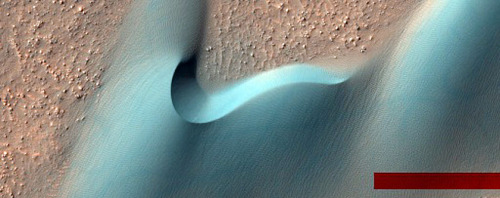
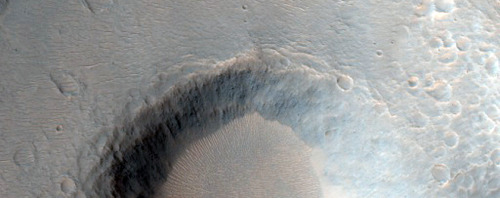
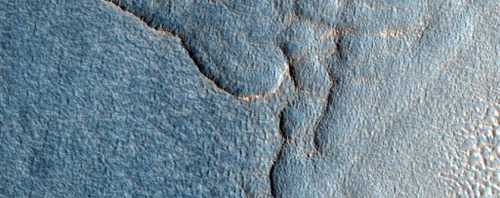
New HiRISE Images
NASA’s HiRISE mission has just released an amazing swathe of new images of the Martian surface.
This mission’s a personal favorite as their images have been detailing Mars in an almost “Google Earth” manner of beauty. From the Martian sky you can see the dunes, craters and other features that litter the landscape, revealing the clues that detail the mysterious story of Mars.
See the images here!
(Image credit: NASA/JPL/University of Arizona)
More Posts from Maevetheeuropan and Others

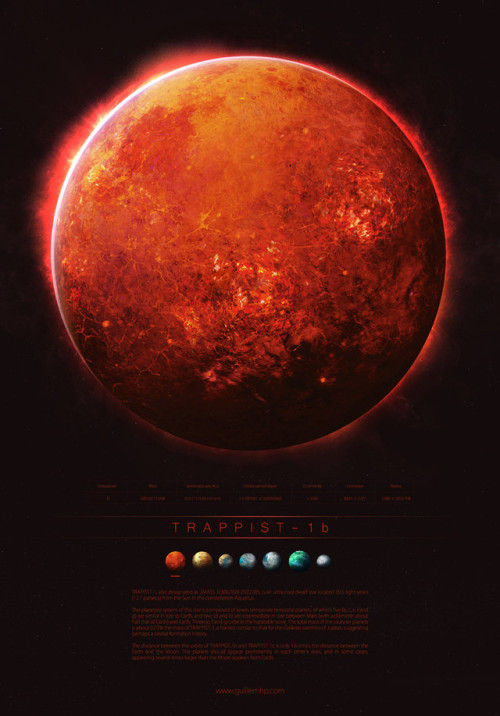
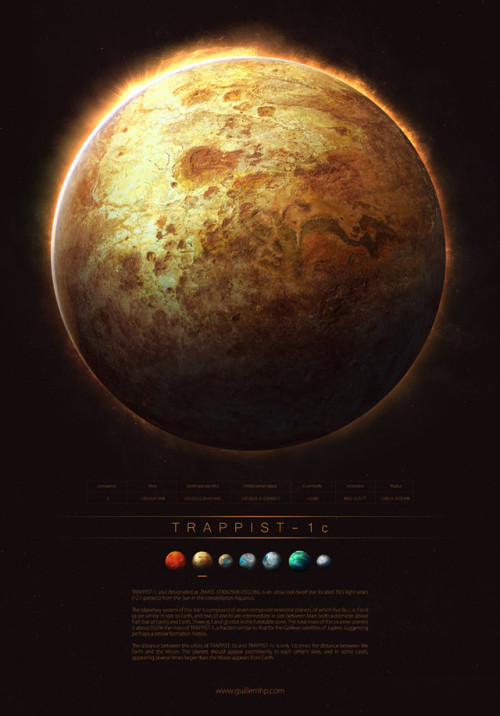
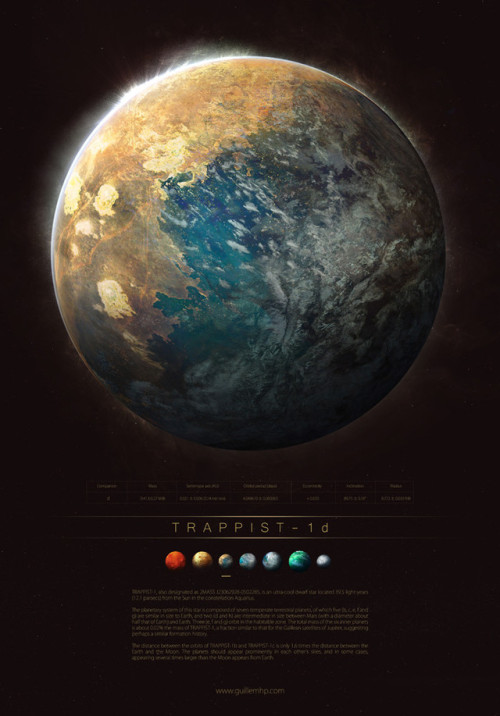
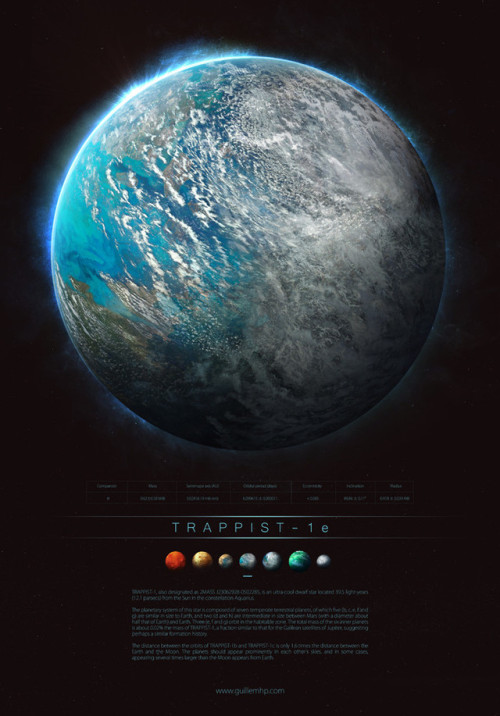
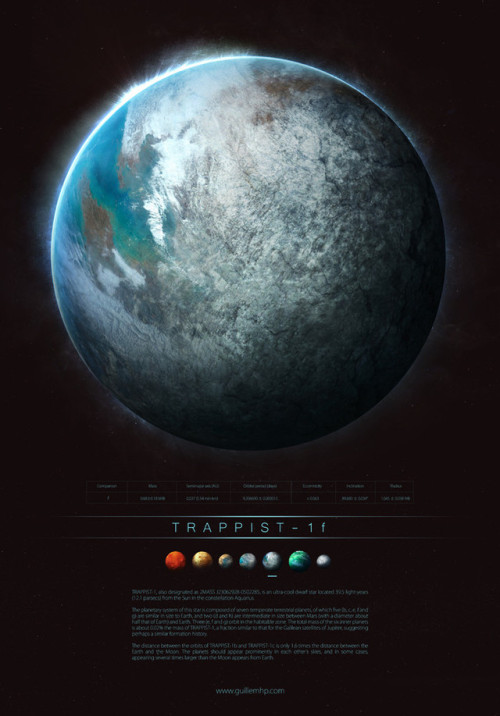

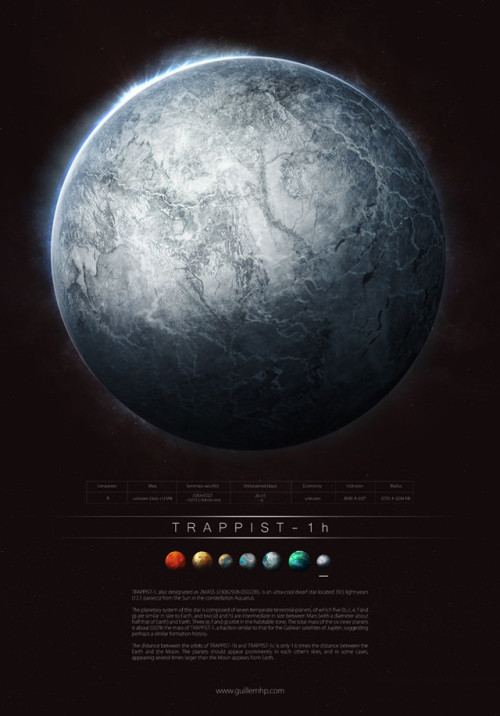
TRAPPIST - 1 by Guillem H. Pongiluppi
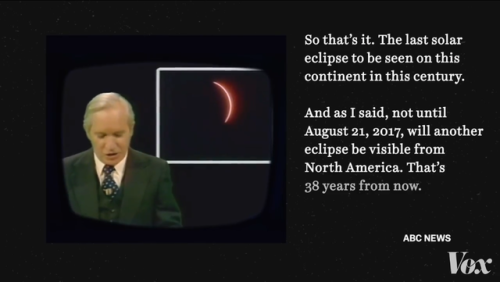
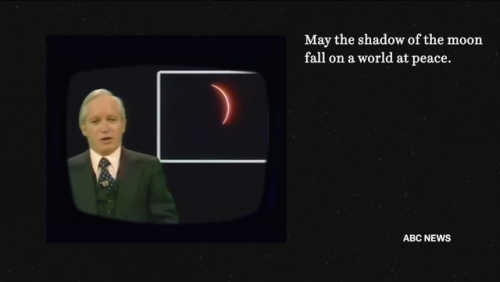

It’s super shitty quality but here it is!
When Dead Stars Collide!
Gravity has been making waves - literally. Earlier this month, the Nobel Prize in Physics was awarded for the first direct detection of gravitational waves two years ago. But astronomers just announced another huge advance in the field of gravitational waves - for the first time, we’ve observed light and gravitational waves from the same source.

There was a pair of orbiting neutron stars in a galaxy (called NGC 4993). Neutron stars are the crushed leftover cores of massive stars (stars more than 8 times the mass of our sun) that long ago exploded as supernovas. There are many such pairs of binaries in this galaxy, and in all the galaxies we can see, but something special was about to happen to this particular pair.

Each time these neutron stars orbited, they would lose a teeny bit of gravitational energy to gravitational waves. Gravitational waves are disturbances in space-time - the very fabric of the universe - that travel at the speed of light. The waves are emitted by any mass that is changing speed or direction, like this pair of orbiting neutron stars. However, the gravitational waves are very faint unless the neutron stars are very close and orbiting around each other very fast.

As luck would have it, the teeny energy loss caused the two neutron stars to get a teeny bit closer to each other and orbit a teeny bit faster. After hundreds of millions of years, all those teeny bits added up, and the neutron stars were *very* close. So close that … BOOM! … they collided. And we witnessed it on Earth on August 17, 2017.

Credit: National Science Foundation/LIGO/Sonoma State University/A. Simonnet
A couple of very cool things happened in that collision - and we expect they happen in all such neutron star collisions. Just before the neutron stars collided, the gravitational waves were strong enough and at just the right frequency that the National Science Foundation (NSF)’s Laser Interferometer Gravitational-Wave Observatory (LIGO) and European Gravitational Observatory’s Virgo could detect them. Just after the collision, those waves quickly faded out because there are no longer two things orbiting around each other!
LIGO is a ground-based detector waiting for gravitational waves to pass through its facilities on Earth. When it is active, it can detect them from almost anywhere in space.

The other thing that happened was what we call a gamma-ray burst. When they get very close, the neutron stars break apart and create a spectacular, but short, explosion. For a couple of seconds, our Fermi Gamma-ray Telescope saw gamma-rays from that explosion. Fermi’s Gamma-ray Burst Monitor is one of our eyes on the sky, looking out for such bursts of gamma-rays that scientists want to catch as soon as they’re happening.
And those gamma-rays came just 1.7 seconds after the gravitational wave signal. The galaxy this occurred in is 130 million light-years away, so the light and gravitational waves were traveling for 130 million years before we detected them.

After that initial burst of gamma-rays, the debris from the explosion continued to glow, fading as it expanded outward. Our Swift, Hubble, Chandra and Spitzer telescopes, along with a number of ground-based observers, were poised to look at this afterglow from the explosion in ultraviolet, optical, X-ray and infrared light. Such coordination between satellites is something that we’ve been doing with our international partners for decades, so we catch events like this one as quickly as possible and in as many wavelengths as possible.

Astronomers have thought that neutron star mergers were the cause of one type of gamma-ray burst - a short gamma-ray burst, like the one they observed on August 17. It wasn’t until we could combine the data from our satellites with the information from LIGO/Virgo that we could confirm this directly.

This event begins a new chapter in astronomy. For centuries, light was the only way we could learn about our universe. Now, we’ve opened up a whole new window into the study of neutron stars and black holes. This means we can see things we could not detect before.

The first LIGO detection was of a pair of merging black holes. Mergers like that may be happening as often as once a month across the universe, but they do not produce much light because there’s little to nothing left around the black hole to emit light. In that case, gravitational waves were the only way to detect the merger.

Image Credit: LIGO/Caltech/MIT/Sonoma State (Aurore Simonnet)
The neutron star merger, though, has plenty of material to emit light. By combining different kinds of light with gravitational waves, we are learning how matter behaves in the most extreme environments. We are learning more about how the gravitational wave information fits with what we already know from light - and in the process we’re solving some long-standing mysteries!
Want to know more? Get more information HERE.
Make sure to follow us on Tumblr for your regular dose of space: http://nasa.tumblr.com
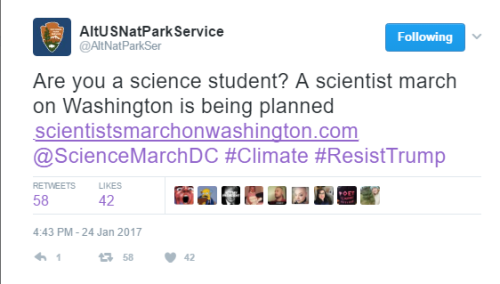
GUYS https://twitter.com/AltNatParkSer/status/824054953404669953 http://www.scientistsmarchonwashington.com/ THE NATIONAL PARK SERVICE IS IN OPEN REBELLION
Save Science
Not sure what to say. I’m actually legitimately nervous the Cheeto-in-Chief will demand a hold on the National Science Foundation grants like he did the EPA (disclaimer, the NSF is where my job comes from).
I feel so terrible for all the scientists and students who are now out of the job
Hey! Just wondering, how did a solar eclipse prove the theory of relativity?
According to the theory of relativity space is not static. The movements of objects can change the structure of space.

In Einstein’s view, space is combined with another dimension - time - which creates universewide “fabric” called space-time. Object travel through this fabric, which can be warped, bent and twisted by the masses and motions of objects within space-time.
One prediction of general relativity was that light should not travel in a perfectly straight line. When traveling through space-time and approaching the gravitational field of a mass object, the light must bend-but not too much.
Then the English astronomer Sir Frank Watson Dyson proposed that the total solar eclipse of 1919 could prove, because the Sun would cross the bright Hyades star cluster. Star light would have to cross the gravitational field of the sun on the way to Earth, but would be visible due to the darkness of the eclipse. This would allow precise measurements of the positions displaced by the gravity of the stars in the sky.

Because of this, teams of researchers strategically positioned themselves in two locations that would initially provide the best conditions for observing the eclipse. One group stayed in Ilha do Príncipe, in São Tomé and Príncipe, and other researchers settled in Sobral, Ceará (Brazil).
Eddington, who led the experiment, first measured the “true” positions of the stars during January and February of 1919. In May, he went to remote Prince Island (in the Gulf of Guinea, on the west coast of Africa) to measure Positions of the stars during the eclipse, seen through the gravitational lens of the sun.

The total eclipse lasted about 6 minutes and 51 seconds, during those few minutes the astronomers captured several photos of the total eclipse. When Eddington returned to England, his data from Príncipe confirmed Einstein’s predictions.Eddington announced his discoveries on November 6, 1919.

Images: x ,x ,x ,x
Unfollow me if you wish, but this blog will NEVER support Trump and instead supports the LGBT community, racial minorities, women, people with disabilities, immigrants, Muslims, Jewish people, and anyone else who is afraid now. I am with you, and this will always be a safe space for you.

Ice is no match for CSU-developed coating
Anyone who’s ever chipped ice off a windshield or nervously watched a plane get de-iced, take note: Colorado State University researchers have invented an ice-repellent coating that out-performs today’s best de-icing products.
Researchers led by Arun Kota, assistant professor of mechanical engineering and biomedical engineering, have created an environmentally friendly, inexpensive, long-lasting coating that could keep everything from cars and ships to planes and power lines ice-free.
Their innovation, described in the Journal of Materials Chemistry, is a gel-based, soft coating made out of PDMS (polydimethylsiloxane), a silicone polymer gel with already widespread industrial use. Their experiments were supported by careful analysis of ice adhesion mechanics.
The performance measure of de-icing coatings is called ice adhesion strength - the shear stress necessary to remove ice from a surface - and is measured in kilopascals (kPa). Kota’s group demonstrated ice adhesion strength for their coating of about 5 kPa. By contrast, soft coatings available on the market have ice adhesion strength of about 40 kPa (lower is better). Other types of de-icing coatings made of rigid materials like Teflon typically perform at around 100 kPa.
Read more.
Largest Batch of Earth-size, Habitable Zone Planets
Our Spitzer Space Telescope has revealed the first known system of seven Earth-size planets around a single star. Three of these planets are firmly located in an area called the habitable zone, where liquid water is most likely to exist on a rocky planet.
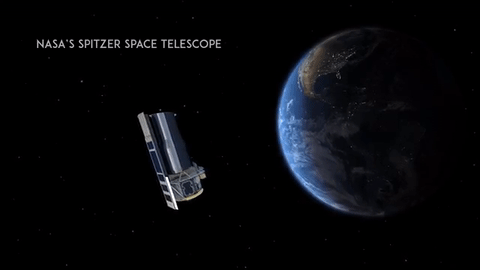
This exoplanet system is called TRAPPIST-1, named for The Transiting Planets and Planetesimals Small Telescope (TRAPPIST) in Chile. In May 2016, researchers using TRAPPIST announced they had discovered three planets in the system.

Assisted by several ground-based telescopes, Spitzer confirmed the existence of two of these planets and discovered five additional ones, increasing the number of known planets in the system to seven.
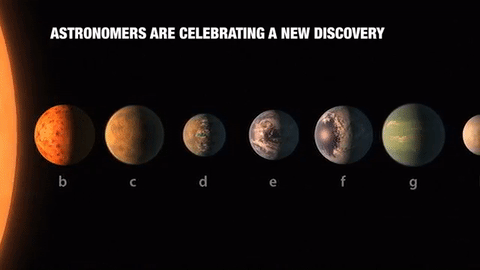
This is the FIRST time three terrestrial planets have been found in the habitable zone of a star, and this is the FIRST time we have been able to measure both the masses and the radius for habitable zone Earth-sized planets.
All of these seven planets could have liquid water, key to life as we know it, under the right atmospheric conditions, but the chances are highest with the three in the habitable zone.

At about 40 light-years (235 trillion miles) from Earth, the system of planets is relatively close to us, in the constellation Aquarius. Because they are located outside of our solar system, these planets are scientifically known as exoplanets. To clarify, exoplanets are planets outside our solar system that orbit a sun-like star.

In this animation, you can see the planets orbiting the star, with the green area representing the famous habitable zone, defined as the range of distance to the star for which an Earth-like planet is the most likely to harbor abundant liquid water on its surface. Planets e, f and g fall in the habitable zone of the star.
Using Spitzer data, the team precisely measured the sizes of the seven planets and developed first estimates of the masses of six of them. The mass of the seventh and farthest exoplanet has not yet been estimated.

For comparison…if our sun was the size of a basketball, the TRAPPIST-1 star would be the size of a golf ball.
Based on their densities, all of the TRAPPIST-1 planets are likely to be rocky. Further observations will not only help determine whether they are rich in water, but also possibly reveal whether any could have liquid water on their surfaces.
The sun at the center of this system is classified as an ultra-cool dwarf and is so cool that liquid water could survive on planets orbiting very close to it, closer than is possible on planets in our solar system. All seven of the TRAPPIST-1 planetary orbits are closer to their host star than Mercury is to our sun.

The planets also are very close to each other. How close? Well, if a person was standing on one of the planet’s surface, they could gaze up and potentially see geological features or clouds of neighboring worlds, which would sometimes appear larger than the moon in Earth’s sky.

The planets may also be tidally-locked to their star, which means the same side of the planet is always facing the star, therefore each side is either perpetual day or night. This could mean they have weather patterns totally unlike those on Earth, such as strong wind blowing from the day side to the night side, and extreme temperature changes.

Because most TRAPPIST-1 planets are likely to be rocky, and they are very close to one another, scientists view the Galilean moons of Jupiter – lo, Europa, Callisto, Ganymede – as good comparisons in our solar system. All of these moons are also tidally locked to Jupiter. The TRAPPIST-1 star is only slightly wider than Jupiter, yet much warmer.
How Did the Spitzer Space Telescope Detect this System?
Spitzer, an infrared telescope that trails Earth as it orbits the sun, was well-suited for studying TRAPPIST-1 because the star glows brightest in infrared light, whose wavelengths are longer than the eye can see. Spitzer is uniquely positioned in its orbit to observe enough crossing (aka transits) of the planets in front of the host star to reveal the complex architecture of the system.

Every time a planet passes by, or transits, a star, it blocks out some light. Spitzer measured the dips in light and based on how big the dip, you can determine the size of the planet. The timing of the transits tells you how long it takes for the planet to orbit the star.

The TRAPPIST-1 system provides one of the best opportunities in the next decade to study the atmospheres around Earth-size planets. Spitzer, Hubble and Kepler will help astronomers plan for follow-up studies using our upcoming James Webb Space Telescope, launching in 2018. With much greater sensitivity, Webb will be able to detect the chemical fingerprints of water, methane, oxygen, ozone and other components of a planet’s atmosphere.
At 40 light-years away, humans won’t be visiting this system in person anytime soon…that said…this poster can help us imagine what it would be like:

Make sure to follow us on Tumblr for your regular dose of space: http://nasa.tumblr.com
-
 felunax reblogged this · 6 years ago
felunax reblogged this · 6 years ago -
 felunax liked this · 6 years ago
felunax liked this · 6 years ago -
 journalistsforspace-blog liked this · 8 years ago
journalistsforspace-blog liked this · 8 years ago -
 crutchpunk9 reblogged this · 8 years ago
crutchpunk9 reblogged this · 8 years ago -
 hercomplexxxsimplicity reblogged this · 8 years ago
hercomplexxxsimplicity reblogged this · 8 years ago -
 hercomplexxxsimplicity liked this · 8 years ago
hercomplexxxsimplicity liked this · 8 years ago -
 wavymegavibes liked this · 8 years ago
wavymegavibes liked this · 8 years ago -
 saucerkommand reblogged this · 8 years ago
saucerkommand reblogged this · 8 years ago -
 saucerkommand liked this · 8 years ago
saucerkommand liked this · 8 years ago -
 syzygyethereal-blog reblogged this · 8 years ago
syzygyethereal-blog reblogged this · 8 years ago -
 maevetheeuropan reblogged this · 8 years ago
maevetheeuropan reblogged this · 8 years ago -
 daniele-piccioni liked this · 8 years ago
daniele-piccioni liked this · 8 years ago -
 sc0l reblogged this · 8 years ago
sc0l reblogged this · 8 years ago -
 astronomerseye reblogged this · 8 years ago
astronomerseye reblogged this · 8 years ago -
 who-am-i2016-blog liked this · 8 years ago
who-am-i2016-blog liked this · 8 years ago -
 eruku-ikimori reblogged this · 8 years ago
eruku-ikimori reblogged this · 8 years ago -
 inkyshark reblogged this · 8 years ago
inkyshark reblogged this · 8 years ago -
 mamurljuk liked this · 8 years ago
mamurljuk liked this · 8 years ago -
 stunt-muppet liked this · 8 years ago
stunt-muppet liked this · 8 years ago -
 sister-dear reblogged this · 8 years ago
sister-dear reblogged this · 8 years ago -
 vlerian-root reblogged this · 8 years ago
vlerian-root reblogged this · 8 years ago -
 vlerian-root liked this · 8 years ago
vlerian-root liked this · 8 years ago -
 littleplasticspaceship reblogged this · 8 years ago
littleplasticspaceship reblogged this · 8 years ago -
 alsajano reblogged this · 8 years ago
alsajano reblogged this · 8 years ago -
 alsajano liked this · 8 years ago
alsajano liked this · 8 years ago -
 us2626-blog liked this · 8 years ago
us2626-blog liked this · 8 years ago -
 svealand liked this · 8 years ago
svealand liked this · 8 years ago -
 tiranosauriosrex liked this · 8 years ago
tiranosauriosrex liked this · 8 years ago -
 a-strange-corgi reblogged this · 8 years ago
a-strange-corgi reblogged this · 8 years ago -
 a-strange-corgi liked this · 8 years ago
a-strange-corgi liked this · 8 years ago -
 superficialfish reblogged this · 8 years ago
superficialfish reblogged this · 8 years ago -
 superficialfish liked this · 8 years ago
superficialfish liked this · 8 years ago -
 poisonous-owl liked this · 8 years ago
poisonous-owl liked this · 8 years ago -
 poisonous-owl reblogged this · 8 years ago
poisonous-owl reblogged this · 8 years ago -
 sequenceshepard liked this · 8 years ago
sequenceshepard liked this · 8 years ago -
 lawyerdam liked this · 8 years ago
lawyerdam liked this · 8 years ago -
 adelicateart liked this · 8 years ago
adelicateart liked this · 8 years ago -
 egghead-what-blog liked this · 8 years ago
egghead-what-blog liked this · 8 years ago -
 letterpigeon reblogged this · 8 years ago
letterpigeon reblogged this · 8 years ago -
 corvusiink liked this · 8 years ago
corvusiink liked this · 8 years ago -
 lzyixi liked this · 8 years ago
lzyixi liked this · 8 years ago -
 alphamilla reblogged this · 8 years ago
alphamilla reblogged this · 8 years ago -
 petitgrimoire liked this · 8 years ago
petitgrimoire liked this · 8 years ago